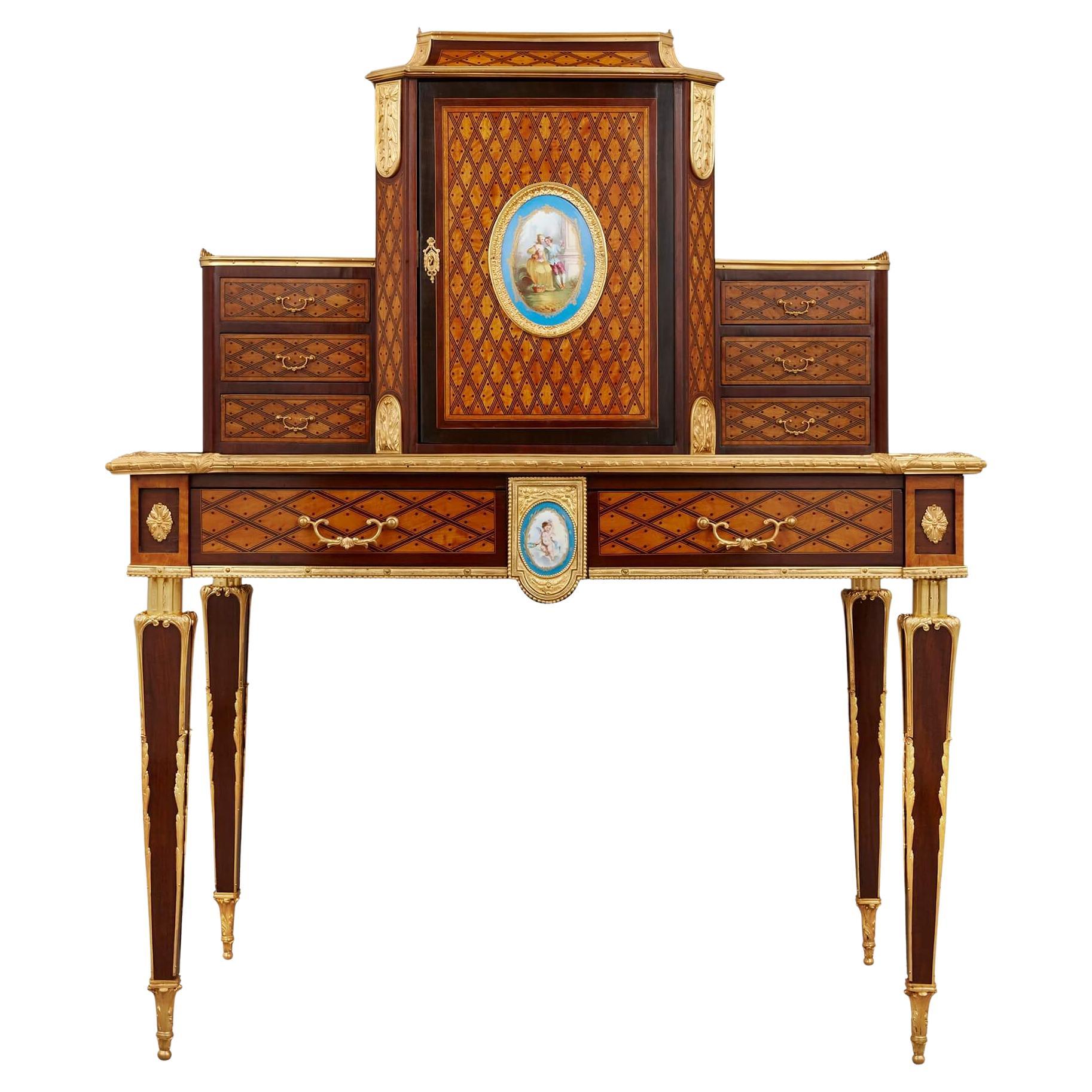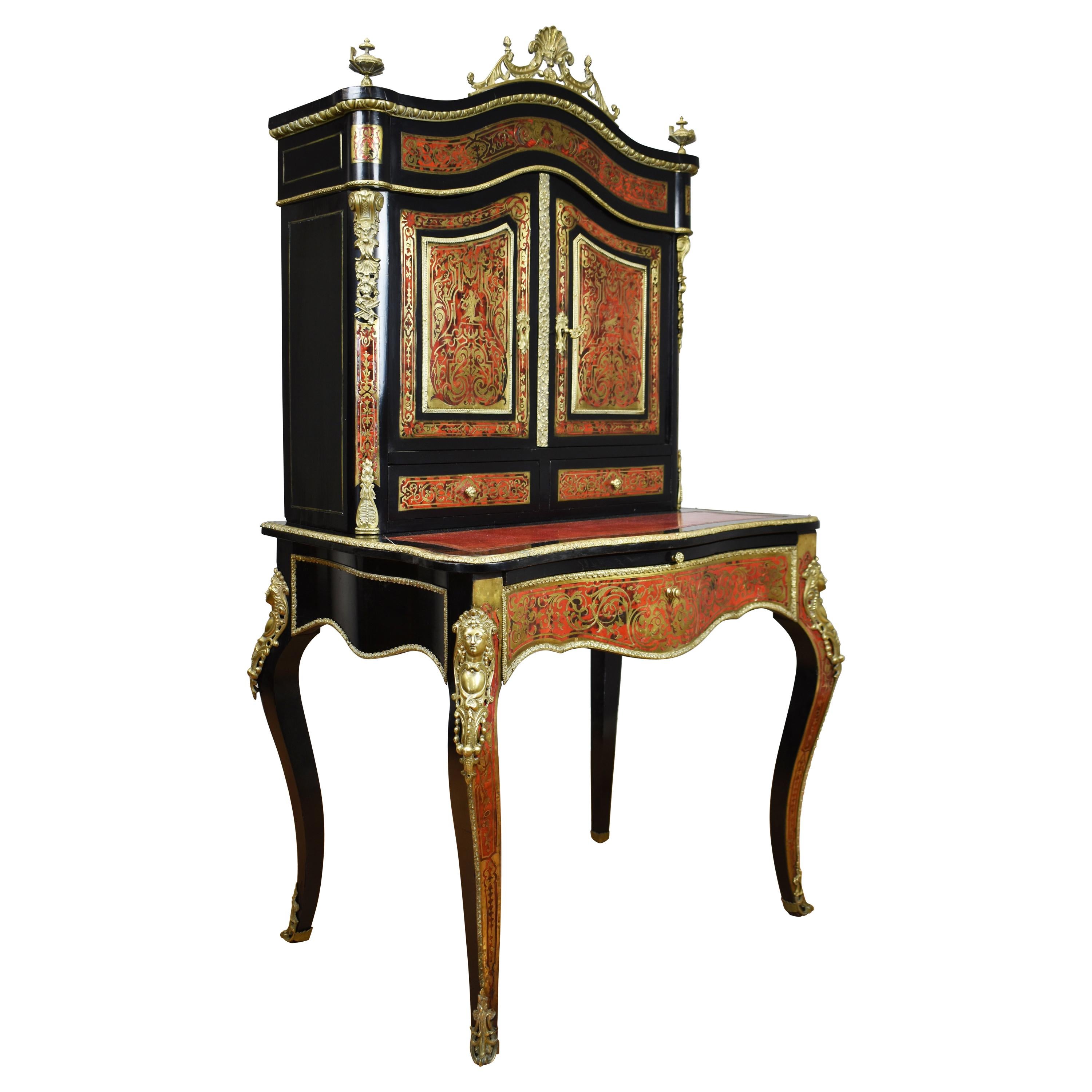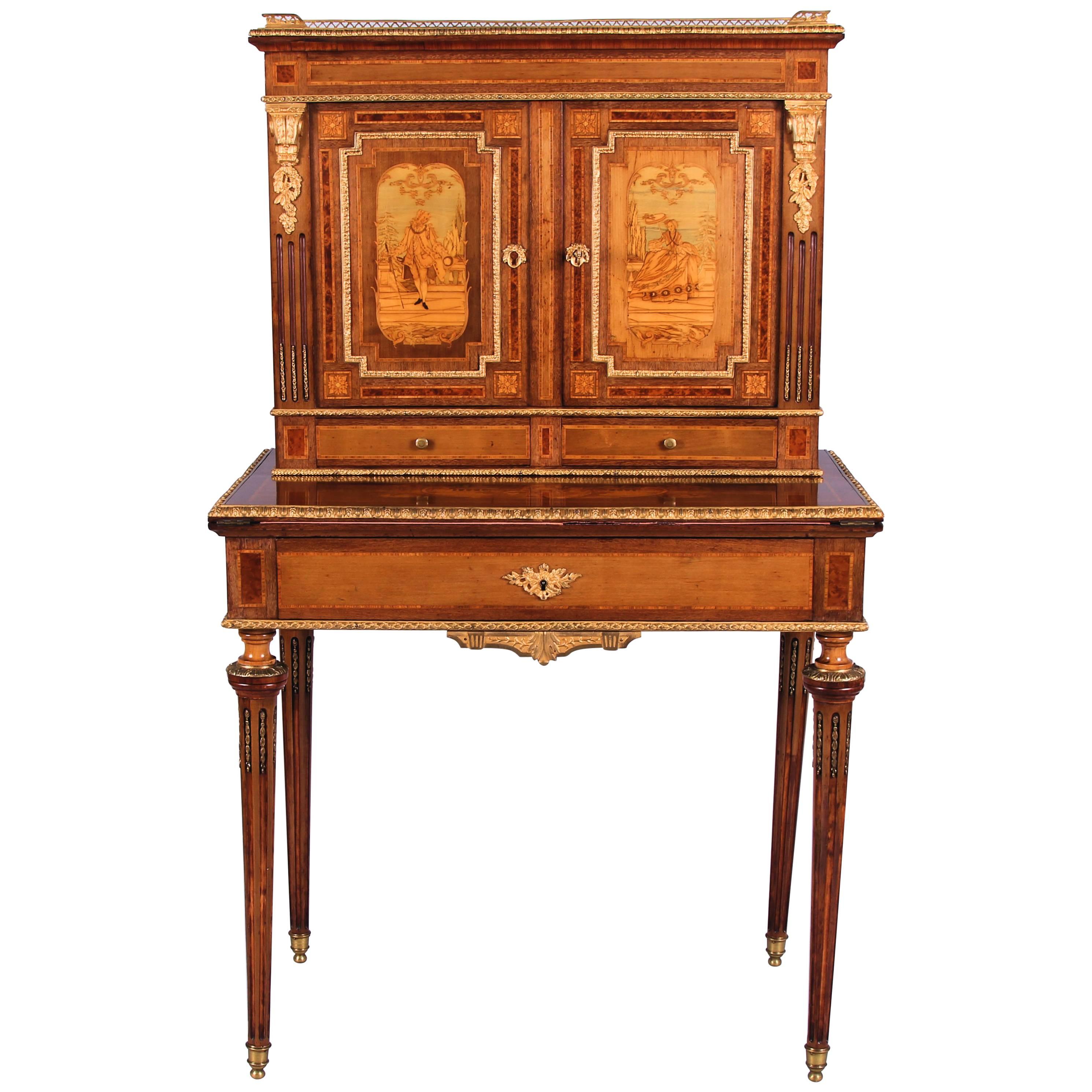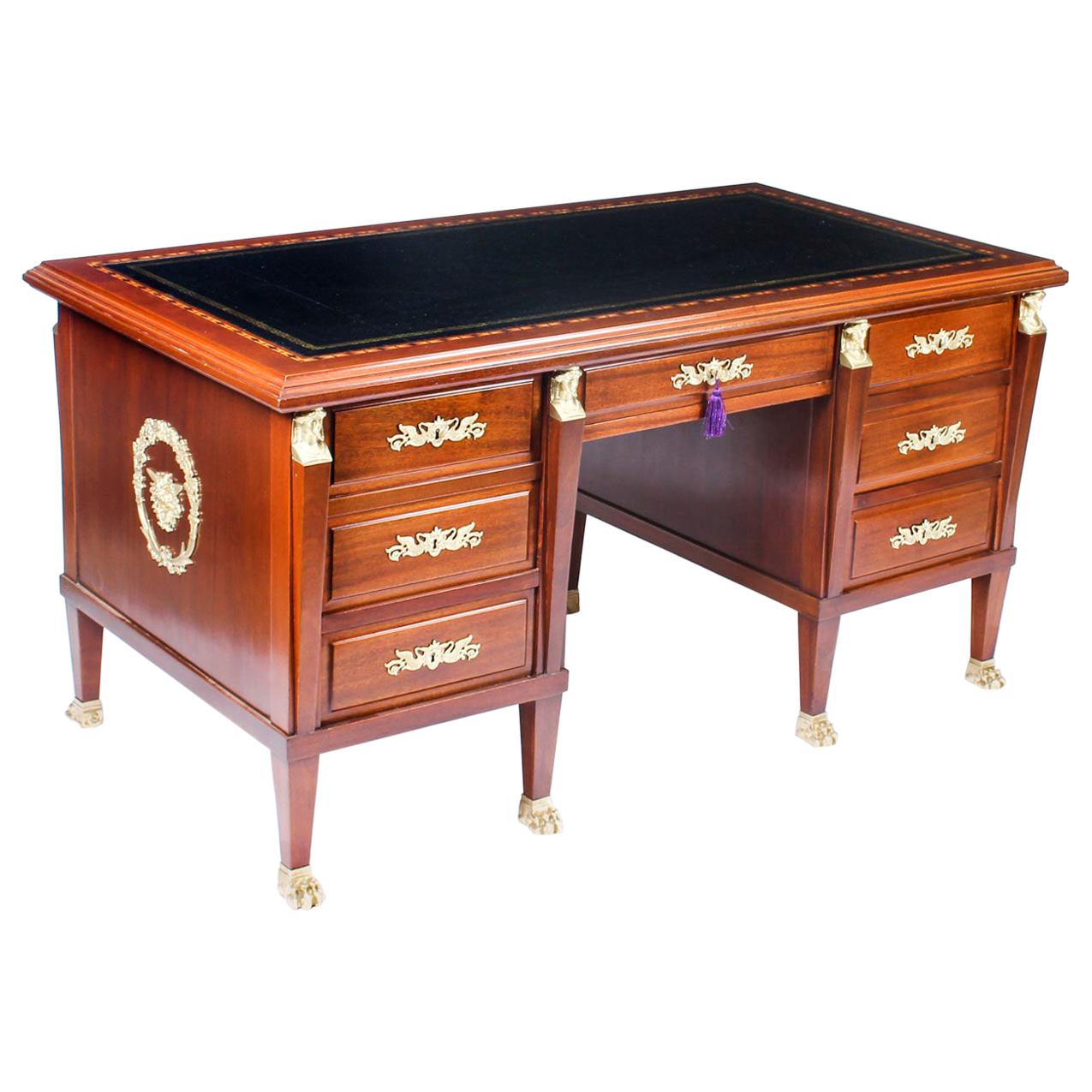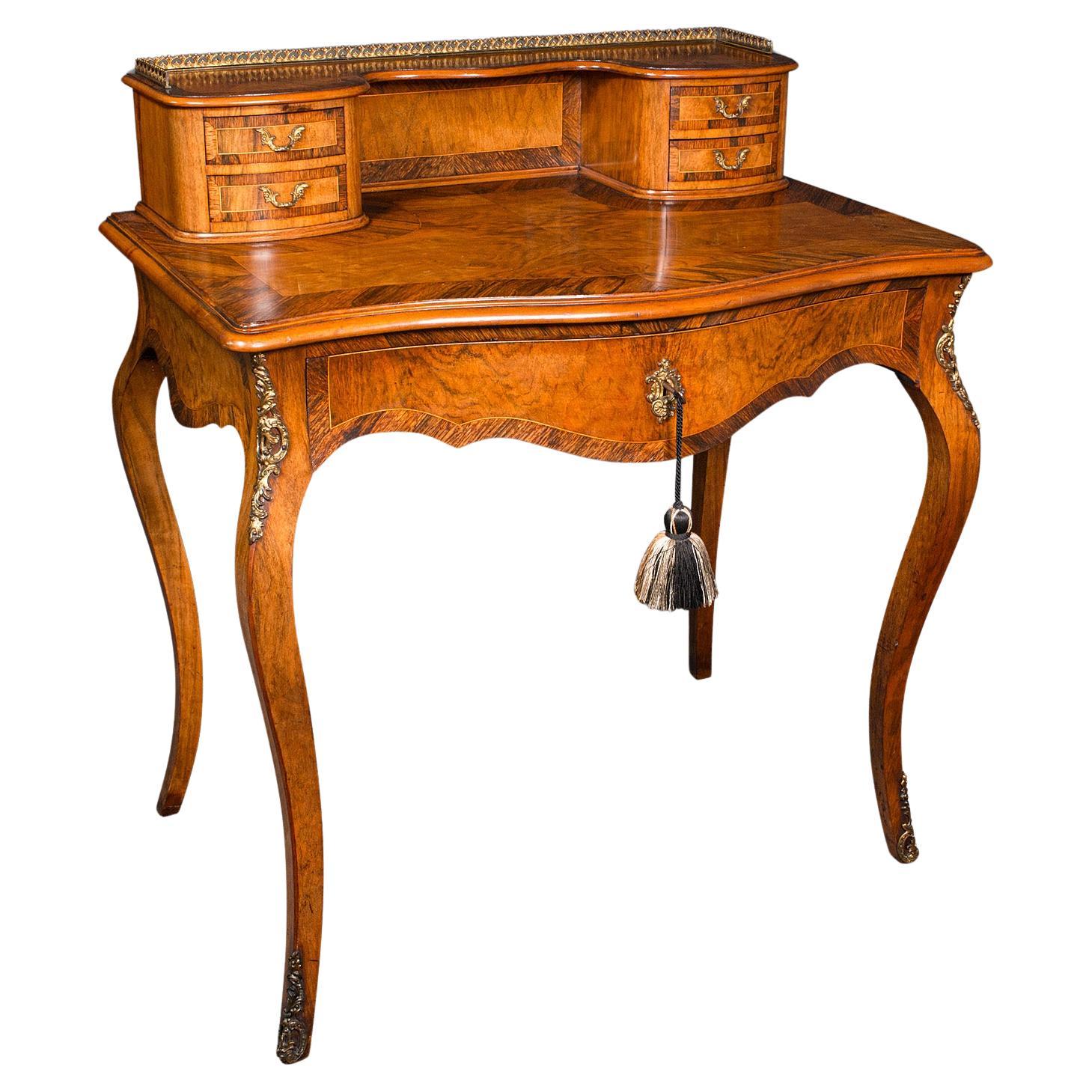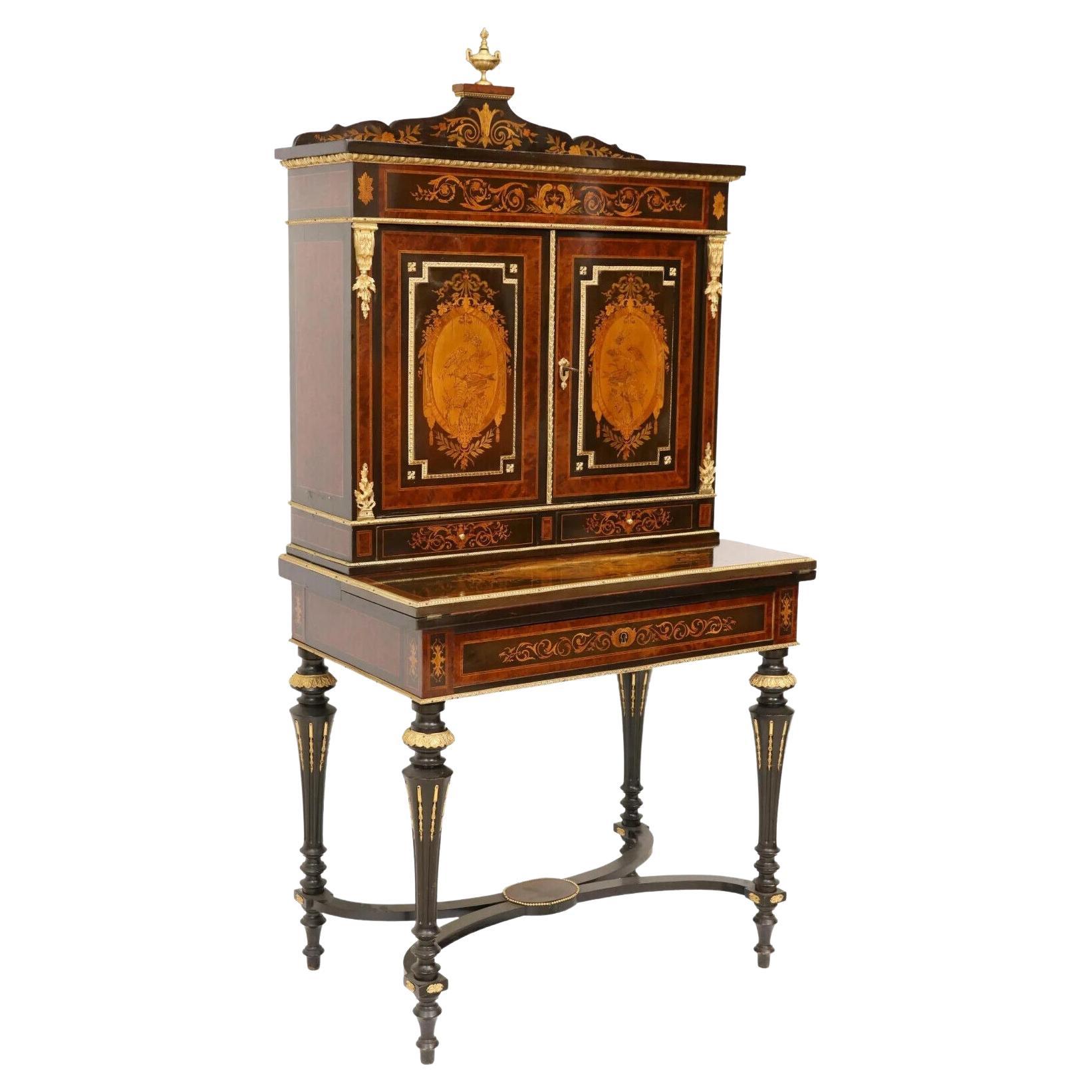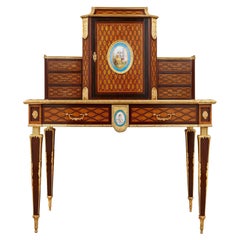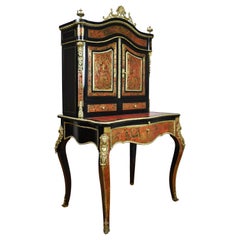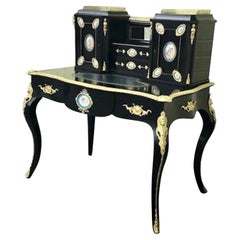
Antique Ebonised Ormolu Mounted Bon-Heur Du Jour Desk
View Similar Items
1 of 14
Antique Ebonised Ormolu Mounted Bon-Heur Du Jour Desk
About the Item
- Creator:Edwards and Roberts (Cabinetmaker)
- Dimensions:Height: 47 in (119.38 cm)Width: 43 in (109.22 cm)Depth: 26 in (66.04 cm)
- Style:Rococo Revival (In the Style Of)
- Materials and Techniques:Wood,Ebonized
- Place of Origin:
- Period:
- Date of Manufacture:1890
- Condition:Refinished. Reupholstered. Wear consistent with age and use.
- Seller Location:Antrim, GB
- Reference Number:1stDibs: LU6004229104382
You May Also Like
- Porcelain and Ormolu Mounted Bonheur Du Jour by Donald RossBy Donald RossLocated in London, GBPorcelain and ormolu mounted bonheur du jour by Donald Ross. English, late 19th century. Measures: height 136cm, width 108cm, depth 62cm This beautifu...Category
Antique Late 19th Century English High Victorian Desks and Writing Tables
MaterialsOrmolu
- 19th Century Ebonised Boulle Bonheur Du JourLocated in Chelmsford, EssexFor sale is a fine quality 19th century ebonised Boulle Bonheur Du Jour writing table. The top, of arched form, has an ornate brass pediment, flanked by...Category
Antique Mid-19th Century French Victorian Desks
- 19th Century, Louis XV Revival Ormolu-Mounted Bonheur Du Jour by DiehlBy Charles-Guillaume DiehlLocated in London, by appointment onlyHighly important and palatial Napoleon III Louis XV Revival Ormolu-Mounted Marquetry Bonheur Du Jour by Charles Guillaume Diehl, Designed by Jean Brandely, The Marquetry by E. Varlot, Paris. The rarity & importance of this magnificent piece cannot be overstated, it is without question one of the finest examples you will see. Originally commissioned for European nobility as a statement of love and marital grandeur. Incorporating the finest & rarest veneers and timbers of the time, including Harewood, Thuya, Purpleheart, palm wood and tulipwood. The beautifully shaped ormolu gallery on the top, gracefully curving outwards inset with fretted heart shapes highlight the incredible attention to detail that flow throughout this majestic piece. The upper section set either side with ormolu mounted fluted pilasters, aside two doors both individually set with masculine & feminine central marquetry panels of the most supreme quality, as you would expect from the master E. Varlot. The colors incorporated in the inlay are outstanding to behold, simply perfection. Opening to reveal the double top & bottom lock, engraved with Diehl's mark and address. Internally veneered in Rosewood of the richest color with one shelf. With two drawers below the doors, both veneered on the inside with Sycamore, one fitted for inkwells. The ormolu edged writing flap again centrally set with both a male & female figure now seated, holding hands with the lady holding a Mandoline, a true sign of happiness & love. The writing flap opening to reveal the original richly tooled velvet leather surface. The stand with one central frieze drawer, again lined inside with rosewood and with a top and bottom lock. On ormolu-mounted fluted legs. This grand Museum Quality masterpiece is in excellent condition for its age. Charles Guillaume Diehl (1811-1885) was of Germanic origins, he is considered among the most important & influential of cabinetmakers of the 19th century. He was born in Steinbach, Germany later moving to France, establishing his atelier in Paris in 1840, at the 3, Rue de Thorigny and then at the 170, Rue Saint...Category
Antique 19th Century French Louis XV Desks and Writing Tables
MaterialsOrmolu
- Antique French Ormolu Mounted Escritoire Writing DeskLocated in London, GBA stunning antique French writing table, also known as an escritoire. This dates from around the 1930’s. It is has a very beautiful and useful design, with a very elegant form. Ther...Category
Vintage 1930s French Louis XV Desks and Writing Tables
MaterialsOrmolu
- Antique French Empire Revival Ormolu Mounted Desk, 19th CenturyLocated in London, GBThis is an exquisite French Empire Revival pedestal desk, circa 1880 in date. This desk has been beautifully crafted from flame mahogany. The top has a striking gold tooled black leather inset writing surface which has a decorative geometric inlaid satinwood and ebony border around it. It features beautifully cast gilded Ormolu mounts including angels, pharaonic herms above paw feet and swan escutcheons. It is further enhanced with male masks wearing nemes headress's on the sides, making it an incredibly imposing and impressive item of furniture. The desk features seven drawers for maximum storage, it is freestanding with a beautifully panelled back and comes complete with the original working locks and keys. This desk will soon become the centrepiece of your furniture collection, there is no mistaking the sophisticated quality and design and it is certain to enhance the style and elegance of any living area, bedroom, or reception. THE BOTANICAL NAME FOR THE MAHOGANY THIS ITEM IS MADE OF IS SWIETENIA MACROPHYLLA AND THIS TYPE OF MAHOGANY IS NOT SUBJECT TO CITES REGULATION. Condition: In excellent condition having been beautifully cleaned, French polished, waxed and releathered in our workshops, please see photos for confirmation. Dimensions in cm: Height 76 x width 150 x depth 80 Dimensions in inches: Height 29.9 x width 59.1 x depth 31.5 Empire style, is an early 19th century design movement in architecture, furniture, other decorative arts, and the visual arts followed in Europe and America until circa 1830. The style originated in and takes its name from the rule of Napoleon I in the First French Empire, where it was intended to idealize Napoleon's leadership and the French state. The style corresponds to the Biedermeier style in the German-speaking lands, Federal style in the United States and to the Regency style in Britain. The previous style was called Louis XVI style, in France. The Empire style was based on aspects of the Roman Empire. It is the second phase of neoclassicism which is also called "Directoire", after a government system. Furniture typically had symbols and ornaments borrowed from the glorious ancient Greek and Roman empires. The furniture was made from heavy woods such as mahogany and ebony, imported from the colonies, with dark finishes often with decorative bronze mounts. Marble tops were popular as were Egyptian motifs like sphinxes, griffins, urns and eagles and the Napoleonic symbols, the eagle, the bee, the initials "I" and a large "N." Gilded bronze (ormolu) details displayed a high level of craftsmanship. Flame mahogany Thomas Sheraton - 18th century furniture designer, once characterized mahogany as "best suited to furniture where strength is demanded as well as a wood that works...Category
Antique 1880s French Empire Revival Desks and Writing Tables
MaterialsOrmolu
- Antique Louis XVI Style Mahogany and Ormolu Bonheur du Jour by WinckelsenBy Charles-Guillaume WinckelsenLocated in London, GBAntique Louis XVI style mahogany and ormolu bonheur du jour by Winckelsen French, 1864 Height 105cm, width 73cm, depth 42cm Charles-Guillaume Winckelsen (French, 1812-1871) is the c...Category
Antique Mid-19th Century French Louis XVI Desks and Writing Tables
MaterialsMarble, Ormolu
Recently Viewed
View AllMore Ways To Browse
Antique Desk Tooled
Antique Desk London
Antique Desks London
Antique Desk London Furniture Desks
Desk Antique Desk London Furniture Desks
Ebonised Table
Antique Painted Writing Desk
Ebonized Writing Desk
1890 Writing Desk
Antique Hand Painted Desk
Ormolu Writing Desk
Lifting Desk
Ebonized Wood Desk
Lift Desk
Ormolu Desk Top
Antique Blue Desk
Blue Antique Desk
Antique Painted Desks
